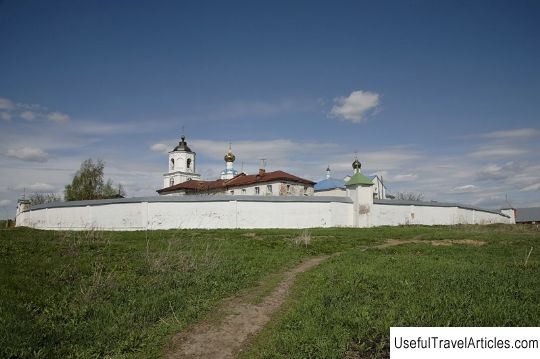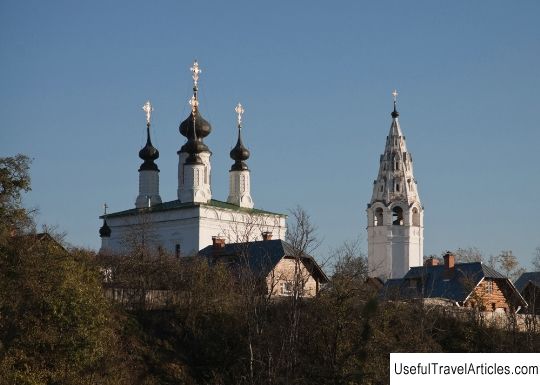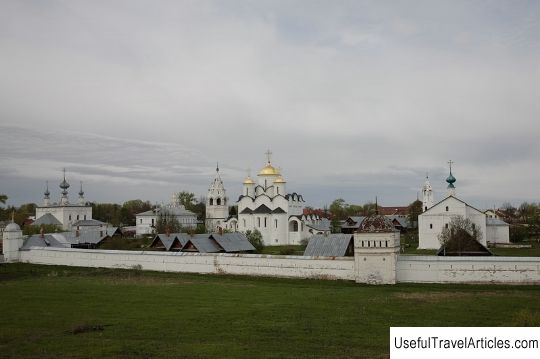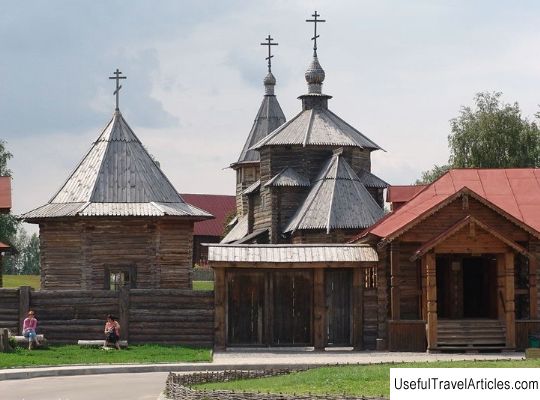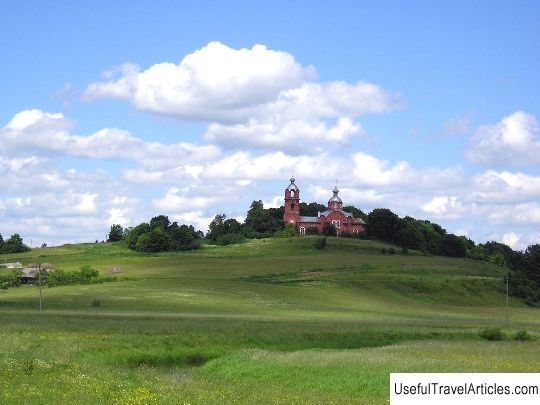Kideksha description and photo - Russia - Golden Ring: Suzdal
Rating: 7,8/10 (176 votes) 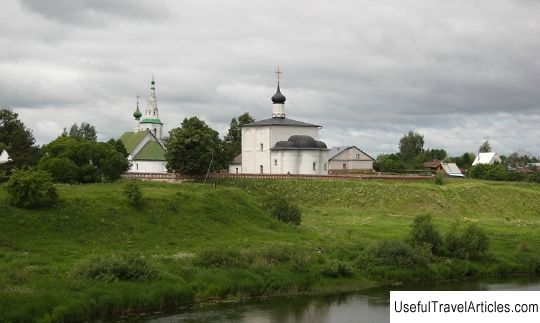
Kideksha description and photos - Russia - Golden Ring: Suzdal. Detailed information about the attraction. Description, photos and a map showing the nearest significant objects. Photo and descriptionKideksha is an old village that is inextricably linked with the historical development of the city of Suzdal. The village got its name at a time when the Slavic tribes did not yet exist, and if you translate "kideksha" from the Finno-Ugric, it means "kamenka". The village is located at the mouth of the Kamenka river, where it flows into the Nerl. According to an old legend, it was here that two brothers once met - Gleb Muromsky and Boris Rostovsky, who went to meet their father, Prince Vladimir, the Red Sun. Soon, both brothers died under the sword of Svyatopolk the Damned, after which the church canonized them. The Church of Boris and Gleb is a temple built of white stone on the territory of the Vladimir-Suzdal land in about 1152. He is one of the oldest after all, its foundation took place at the time of Yuri Dolgoruky. The construction of the temple was carried out when it was decided to build a fortified residence in the local lands, because Kamenka is located on a small hill, especially since in the past the village was even wider and deeper. In 1152, an artel of Galician craftsmen erected a small fortress , which was surrounded by ramparts equipped with wooden walls. A palace and a temple were built in the prince's residence, and chopped chambers were exhibited for the servants. The newly built residence of the prince even endured a raid by the Tatars, which is why in 1239 the church had to be overhauled, which was carried out by order of Cyril, the Rostov bishop. After a while, Kideksha came to complete desolation, because the once abandoned temple stood without a head, and its vaults and adjacent walls completely collapsed. Starting from the 16th century, the village began to belong to the small Pechersky monastery in Nizhny Novgorod, which was able to bring order to these places. In the late 16th and early 17th centuries, the church of Boris and Gleb began to be put in order, while the old white stone was used for the restoration process, which was not destroyed. After all the work, the appearance of the church changed quite a lot, because on the site of the previously existing large chapter and vaulted roof, its wedding was carried out with a simple hipped roof with a small cupola. In the middle of the 19th century, the porch, which has survived to this day, was added to the church. Initially, the Church of Boris and Gleb was especially similar to the architecture of the Dmitrievsky Cathedral in the city of Vladimir, as well as the Church of the Intercession on the Nerl - this is what gives reason to assume what exactly the temple and the princely house in the village of Kideksha were. As for the design of the temple, it was simple even in terms of carved decor - the powerful apses were not decorated with anything , while the portals did not have patterns, only a thin belt of patterns passed along the upper part of the apses, curb and drums. The interior of the church of Boris and Gleb has preserved to our time fragments of some frescoes dating back to the 12th century, which is easy to see even with low light, nailed through the narrow window openings. Not only this temple, but also Stefanovskaya remained in Kideksha church being warm. It was erected in 1780 according to the traditions of Suzdal architecture in terms of warm churches. The structure of the temple includes two volumes of different heights, and the wedding of the church itself is made in the form of a small dome, located on a thin drum. The apse is made of a very large size, which is why it can be compared with other parts of the building. The window opening of the apse is decorated with lush platbands. In the period between the 17th and the beginning of the 18th centuries, the Holy Gates were built, equipped with an unusual carved top and figured decor. The gate appeared simultaneously with a low, stone-built fence. In the same period of time, a hipped-roof bell tower was erected, decorated with a passable arch. The bell tower tent is radically different from the traditional concave Suzdal tents, because it is made straight and equipped with a special "police". Until the beginning of the 20th century, this "police" hung a bell, cast in 1552 as a gift from Ivan the Terrible on the occasion of the capture of Kazan.         We also recommend reading Old and New Town Halls (Altes Rathaus und Neues Rathaus) description and photos - Germany: Hanover Topic: Kideksha description and photo - Russia - Golden Ring: Suzdal. |
